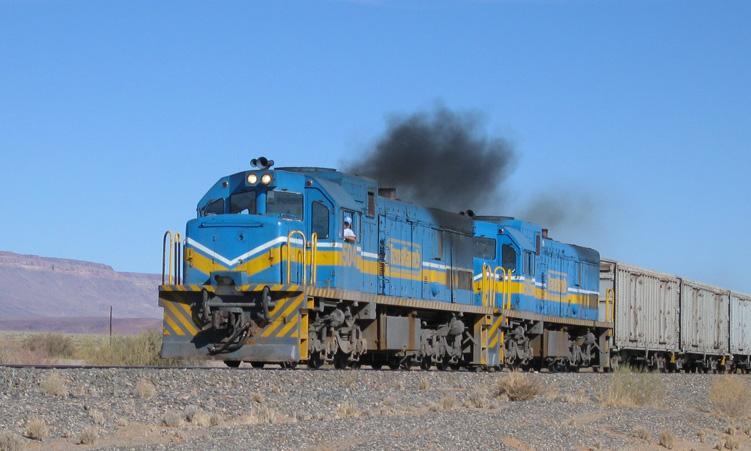Africa-Press – Namibia. Railway parastatal TransNamib and a train driver employed by the company are facing a N$1.4 million lawsuit over a collision between a train and a lorry at Tsumeb in November last year.
This comes after TransNamib recorded 45 railway level crossing accidents over the last five years, of which 11 were in the 2024/25 financial year.
The railway operator has attributed the accidents mainly due to human error and recklessness of road users.
In a case against train driver Paulus Kavera and TransNamib that was filed at the Windhoek High Court in April, the close corporation Redwolf Investment is claiming that a crash between a train and a Redwolf Investment truck was caused by negligence on the part of Kavera and TransNamib.
Redwolf Investment claims to have lost N$1.44 million as a result of the crash, which took place at a railway crossing about two kilometres from Tsumeb during the evening of 21 November 2024.
Lawyer Marco Kazondana, who is representing Redwolf Investment, alleges in the close corporation’s claim against Kavera and TransNamib that a train crashed into a truck and trailer at the railway crossing after Kavera failed to ensure that there were visual warnings or audible signals that could alert road users of an approaching train at the crossing.
The crash is alleged to have taken place while a locomotive operated by Kavera was pushing unlit and unmarked wagons ahead of it, instead of pulling the wagons, “thereby severely limiting visibility to road users”, Kazondana is claiming in Redwolf Investment’s claim against TransNamib and Kavera.
He is also claiming that Kavera “failed to take adequate and reasonable safety measures” and was negligent in operating the locomotive in a hazardous configuration, failing to maintain a vigilant lookout, particularly in low-light conditions.
TransNamib and Kavera, both represented by lawyer Stephen Vlieghe, are opposing the legal action taken against them.
In a plea filed at the court, Vlieghe states that according to TransNamib and Kavera, the train had right of way at the railway crossing and it sounded its hooter in an attempt to warn the truck driver of the train’s approach.
TransNamib employees also waved flashing lights to warn the truck driver of the train’s approach, it is claimed.
“Immediately prior to the collision, the truck was speeding in that it was not adhering to the 30km/h speed limit,” it is further pleaded.
It is also pleaded: “The speeding truck failed to take heed of the ‘railway crossing’ warning sign 120 metres before the level crossing, and the truck failed to stop at the stop sign, crossing the level crossing without stopping and without satisfying himself as to the presence of the oncoming train.”
This is denied by Redwolf Investment.
TransNamib executive for commercial and marketing Kendall Swartz says TransNamib uses warning systems such as fixed signage, road markings and rumble strips, flashing lights, flagmen and automatic or manually operated boom gates at high-risk crossings.
He says most accidents at railway crossings are caused by “the recklessness” of road users.
“Because of the impatience of drivers attempting to cross the rail line immediately before an oncoming train, motorists mostly fail to heed warning signs and sometimes misjudge the speed and distance of an approaching train. The general rules of the trains provide for reasonable safety where train operators at all level crossings will sound the locomotive whistle/horn and at the same time reduce speed and flash the main locomotive lights.”
Swartz says vehicles sometimes get stuck on railway tracks due to drivers’ “misjudgment, leaving them vulnerable to a collision”.
“Overall, there’s a general tendency among the public to underestimate the speed and stopping distance of a train, leading to a false sense of security when approaching a crossing. TransNamib has not been at fault in any of these accidents,” according to Swartz.
For More News And Analysis About Namibia Follow Africa-Press






